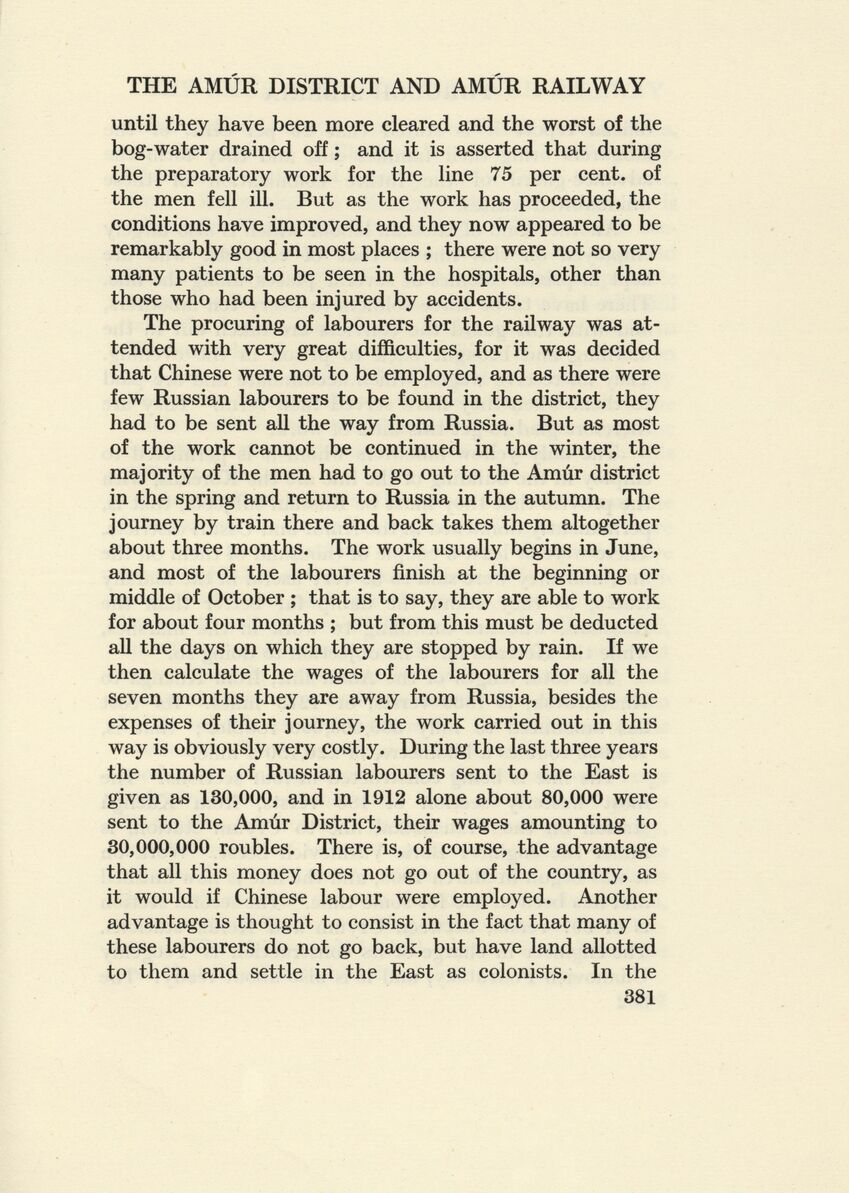
Full resolution (JPEG) - On this page / på denna sida - XVII. The Amúr district and the Amúr railway

<< prev. page << föreg. sida << >> nästa sida >> next page >>
Below is the raw OCR text
from the above scanned image.
Do you see an error? Proofread the page now!
Här nedan syns maskintolkade texten från faksimilbilden ovan.
Ser du något fel? Korrekturläs sidan nu!
This page has never been proofread. / Denna sida har aldrig korrekturlästs.
THE AMUR DISTRICT AND AMUR RAILWAY
381
until they have been more cleared and the worst of the
bog-water drained off ; and it is asserted that during
the preparatory work for the line 75 per cent. of
the men fell ill. But as the work has proceeded, the
conditions have improved, and they now appeared to be
remarkably good in most places ; there were not so very
many patients to be seen in the hospitals, other than
those who had been injured by accidents.
The procuring of labourers for the railway was at
tended with very great difficulties, for it was decided
that Chinese were not to be employed, and as there were
few Russian labourers to be found in the district, they
had to be sent all the way from Russia. But as most
of the work cannot be continued in the winter, the
majority of the men had to go out to the Amiir district
in the spring and return to Russia in the autumn. The
journey by tram there and back takes them altogether
about three months. The work usually begins in June,
and most of the labourers finish at the beginning or
middle of October ; that is to say, they are able to work
for about four months ; but from this must be deducted
all the days on which they are stopped by ram. If wc
then calculate the wages of the labourers for all the
seven months they are away from Russia, besides the
expenses of their journey, the work carried out in this
way is obviously very costly. During the last three years
the number of Russian labourers sent to the East is
given as 130,000, and in 1912 alone about 80,000 were
sent to the Amiir District, their wages amounting to
30,000,000 roubles. There is, of course, the advantage
that all this money does not go out of the country, as
it would if Chinese labour were employed. Another
advantage is thought to consist in the fact that many of
these labourers do not go back, but have land allotted
to them and settle in the East as colonists. In the
<< prev. page << föreg. sida << >> nästa sida >> next page >>